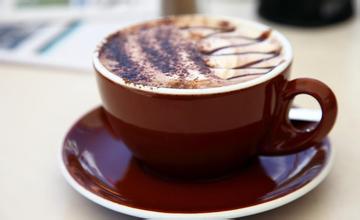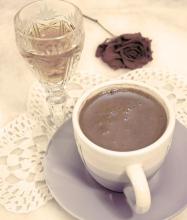Introduction to boutique coffee from Paradise Bird Manor in Papua New Guinea
Papua New Guinea is the second largest country in the South Pacific after Australia in population and area. It consists of New Guinea in the north and Papua in the south. It borders the province of Irian Jaya in Indonesia to the west and faces Australia across the Torres Strait to the south. It belongs to Melanesia.
Papua New Guinea covers an area of 462840 square kilometres, with a total coastline of 8300 kilometres and a water area of 2.4 million square kilometres, including the 200-nautical-mile exclusive economic zone (2013). There are more than 600 islands in the territory. The islands are mountainous, with many volcanoes and frequent earthquakes. Papua New Guinea, including the eastern part of New Guinea (Irian), New England, New Ireland, Manas, Bougainville and Buka, is divided into 21 provinces and capital districts (Port Moresby). The names of the provinces are as follows: central (once translated as "Central"), Northern (once translated as "North"), Chimbu, East New Britain, East Sepik, East Highlands, Enga, Gulf, Madan, Manus, Min Bay, Moroby, New Ireland, North Solomon, South Highlands, West New Britain, West Sepik, West, West Highlands, Hela Province, Jiwaka Province. [3]
major city
Capital
Port Moresby (Port Moresby), with a population of about 500000 (2011). National political, economic and cultural center. Located on the southeast coast of Guinea Island, bordering on Papua Bay, it is the largest port city in Papua New Guinea, with well-equipped bathing beaches and marine sports facilities along the port.
Laicheng city
The capital of Morobe province, the largest industrial city in the country. It is located in the eastern part of the country, at the top of Hoon Bay on the south coast of Solomon. There are factories and steel companies in the city. Suburban airports have regular sea and air routes to offshore islands and inland areas.
However, it is almost inevitable that the surge in production leads to a decline in quality. Before 1991, the quality of coffee was good, and most of it belonged to open Y and so on. After 1991, the quality gradually declined, and with it the European market was lost. The extra price of coffee such as Y also gradually fell. This is related to the country's policy of "one grade, one price". This policy is not feasible for an industry as volatile as coffee. As a result, poor quality coffee beans damaged the image of high quality standards such as Y coffee, resulting in a backlog.
The government's response is to establish a new level of quality, temporarily suspend the production of coffee such as Y, and no longer implement the policy of "one grade, one price". This allows buyers to price according to quality, which is bound to have an impact on the income of farmers who produce shoddy coffee beans. By 1993, the quality problem had been basically solved. Most regular customers are buying coffee from Papua New Guinea again. Coffee such as Y is now sold at slightly lower extra prices, indicating that its quality has improved in Papua New Guinea, where about 75 per cent of coffee products come from small local farms. Many farms reclaim land in the forest, and some are in the depths of the forest, almost isolated from the rest of the world. Coffee in the country is grown on highlands between 1300 and 1800 meters above sea level, so it is of high quality. Although coffee is also grown in some lowlands, the yield is relatively small. Most of the locally grown coffee is grown under natural conditions because of the problems and high costs of transporting chemical fertilizers and pesticides to the farm.
The coffee industry plays an important role in the country's economy. More than 1 million people are directly and indirectly engaged in the industry. The government encourages planting by offering a minimum purchase price. The industry itself is controlled by the Coffee Industry Council (Coffee Industry Board). The commission is located in Goroka, in the eastern part of the island, while exports are handled by private companies.
The frost in 1975 destroyed most coffee crops in Brazil, but stimulated the development of coffee in Papua New Guinea. The Government has implemented a scheme to finance the creation of about 20 hectares of coffee plantations in rural or collective land ownership. This measure has indeed increased the penetration of coffee in the local economy, with an annual output of 1 million bags by 1990.

Important Notice :
前街咖啡 FrontStreet Coffee has moved to new addredd:
FrontStreet Coffee Address: 315,Donghua East Road,GuangZhou
Tel:020 38364473
- Prev

Aroma rich Nicaragua lemon tree estate coffee flavor characteristics
From July 1927, Augusto. Cesar Sandinista led a guerrilla war against the American occupation, forcing the withdrawal of American troops in 1933. February 21, 1934 Nicaragua National Guard Commander Anastasio. Somoza. Garcia assassinated Sandino at the behest of President Roosevelt. He took office in 1936 and has since established a pro-American relationship for more than 40 years.
- Next

Introduction to the aroma and mellow flavor of Ethiopian Coffee from Cedar Motad Manor.
In February 1977, Lieutenant Colonel Mengistu Haier Maryam (MENGISTU HAILE MARIAM) launched a military coup and served as Chairman of the interim military Administrative Council and head of State. In 1979, the Ethiopian Labor people's Party Organization Committee, dominated by soldiers, was established to implement an one-party system. In 1984, the Ethiopian Workers' Party was formed according to the Soviet Communist Party model. Mengistu, September 1987
Related
- Does Rose Summer choose Blue, Green or Red? Detailed explanation of Rose Summer Coffee plots and Classification in Panamanian Jade Manor
- What is the difference between the origin, producing area, processing plant, cooperative and manor of coffee beans?
- How fine does the espresso powder fit? how to grind the espresso?
- Sca coffee roasting degree color card coffee roasting degree 8 roasting color values what do you mean?
- The practice of lattes: how to make lattes at home
- Introduction to Indonesian Fine Coffee beans-- Java Coffee producing area of Indonesian Arabica Coffee
- How much will the flavor of light and medium roasted rose summer be expressed? What baking level is rose summer suitable for?
- Introduction to the characteristics of washing, sun-drying or wet-planing coffee commonly used in Mantenin, Indonesia
- Price characteristics of Arabica Coffee Bean Starbucks introduction to Manning Coffee Bean Taste producing area Variety Manor
- What is the authentic Yega flavor? What are the flavor characteristics of the really excellent Yejasuffi coffee beans?

